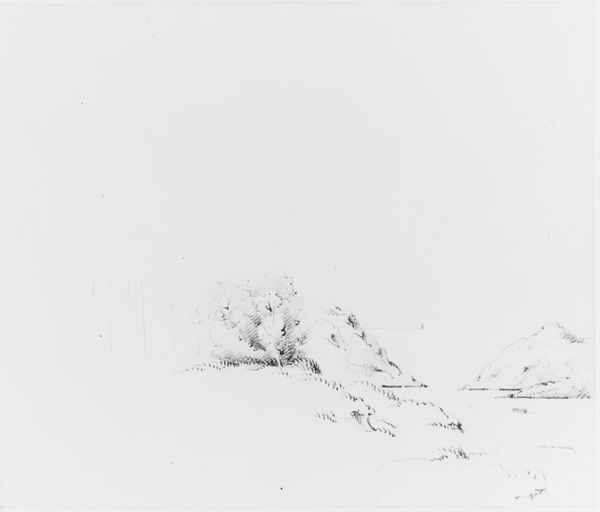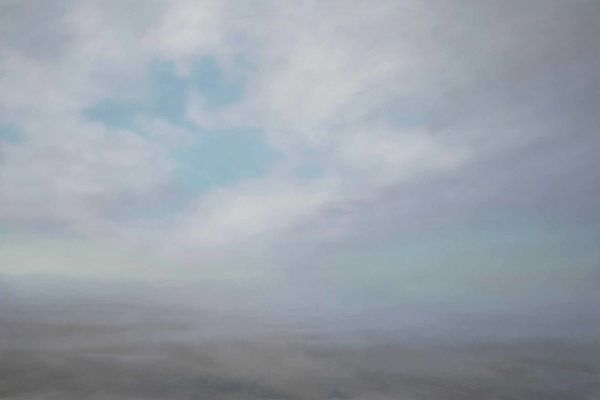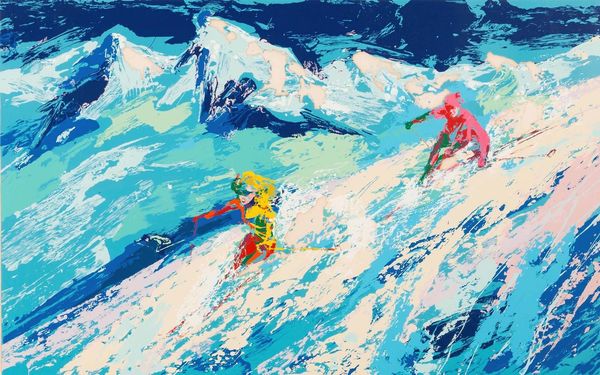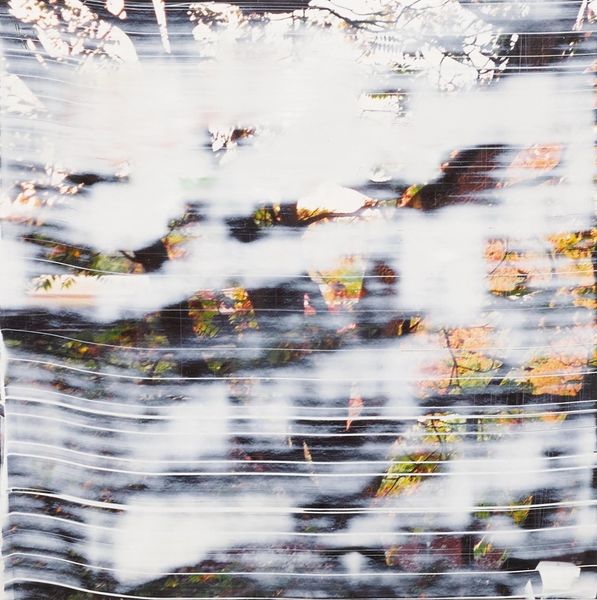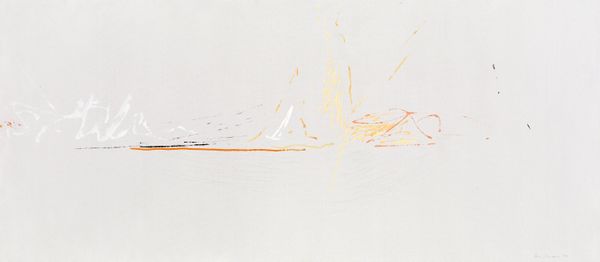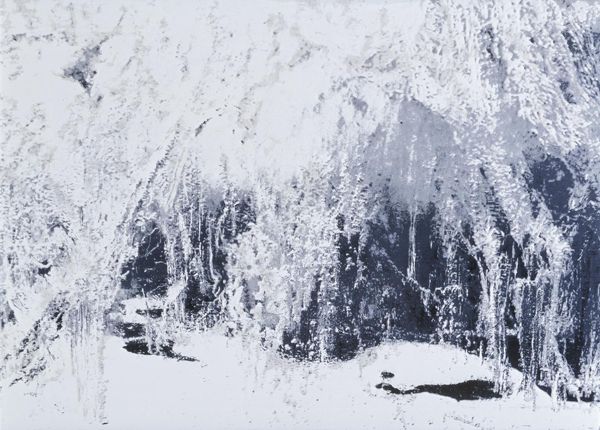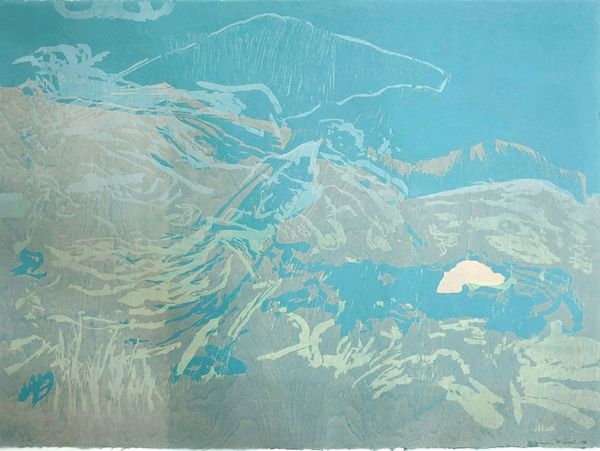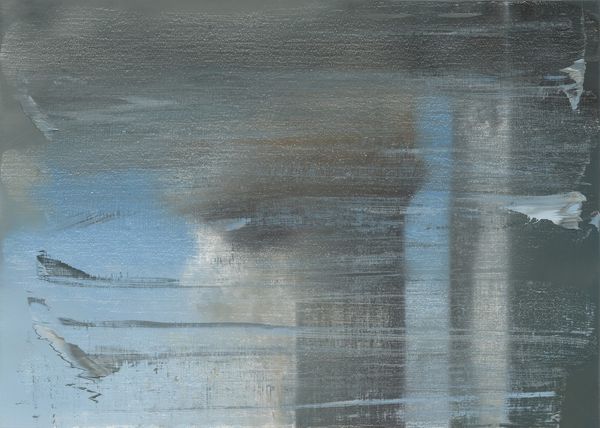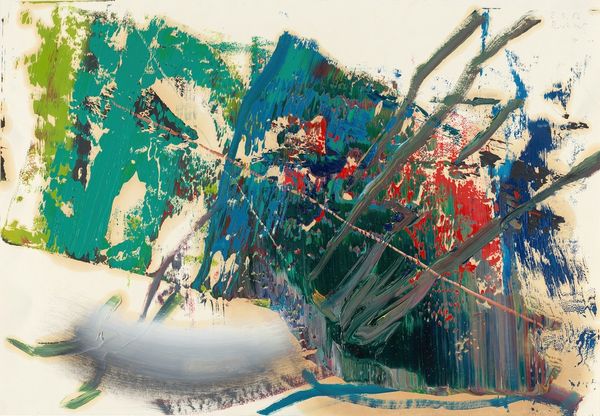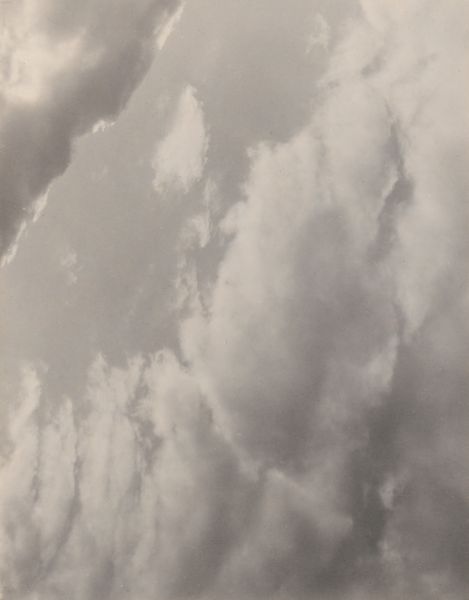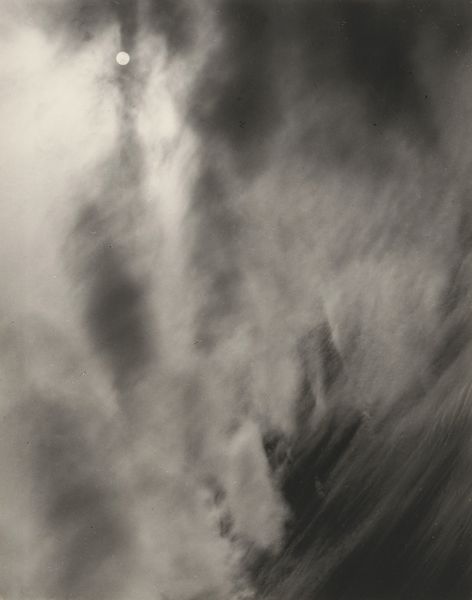
mixed-media, photography
#
mixed-media
#
contemporary
#
abstract painting
#
landscape
#
photography
#
capitalist-realism
#
abstract-art
#
abstract art
Copyright: Modern Artists: Artvee
Curator: What a strangely captivating image. At first glance, the composition gives me the sensation of floating in some liminal space, somewhere between familiar landscape and the utterly alien. Editor: You’ve keyed right into it. This is Gerhard Richter’s “Val Fex,” a mixed-media work from 1992. Richter, of course, always playing with perception, blurring boundaries. What appears to be a fairly straightforward photographic landscape is actually overpainted, those playful dots and splotches disrupting our sense of reality. Curator: Those are no ordinary polka dots; they feel like something out of a dreamscape. Notice how the eye struggles to resolve them against the mountain’s craggy face. They mimic and mock our sense of perspective; almost a commentary on imposed views, really. Richter toys with collective assumptions about nature—that it’s knowable, containable, pristine, maybe? Editor: Precisely. And that is the point, isn’t it? Richter challenges the tradition of landscape painting and photography, forcing us to question the construction of the image itself. His approach reveals how heavily the media – photographic and artistic – influences our comprehension of places like Val Fex. How this place exists beyond our framing. Curator: Yes. What about those pale blues, pinks, and creams? They invoke innocence, but juxtaposed with the rough terrain they somehow emphasize the inhospitality of it. Or perhaps our own inadequate understanding. It’s such a potent play on visual harmony and disharmony – reflecting, too, the ways we perceive natural beauty as a social construct. Editor: Absolutely, there’s a critical dimension there, typical of Richter’s engagement with art history. “Val Fex,” for me, reflects our continued fascination with nature as something we wish to dominate but can’t control, the picturesque as ideology. The overlaid abstractions foreground this struggle. In a very real sense, he reflects on the romanticism of earlier German painters, subverting our very longing for visual truth. Curator: Agreed. “Val Fex” stays in the memory because it withholds. The piece prompts ongoing dialogue about art and our world. Editor: Definitely, it leaves us contemplating not only the surface of the image but also the deeper socio-historical context of our relationship with landscape and image-making. A brilliant gesture of the seen and the unseen.
Comments
No comments
Be the first to comment and join the conversation on the ultimate creative platform.
